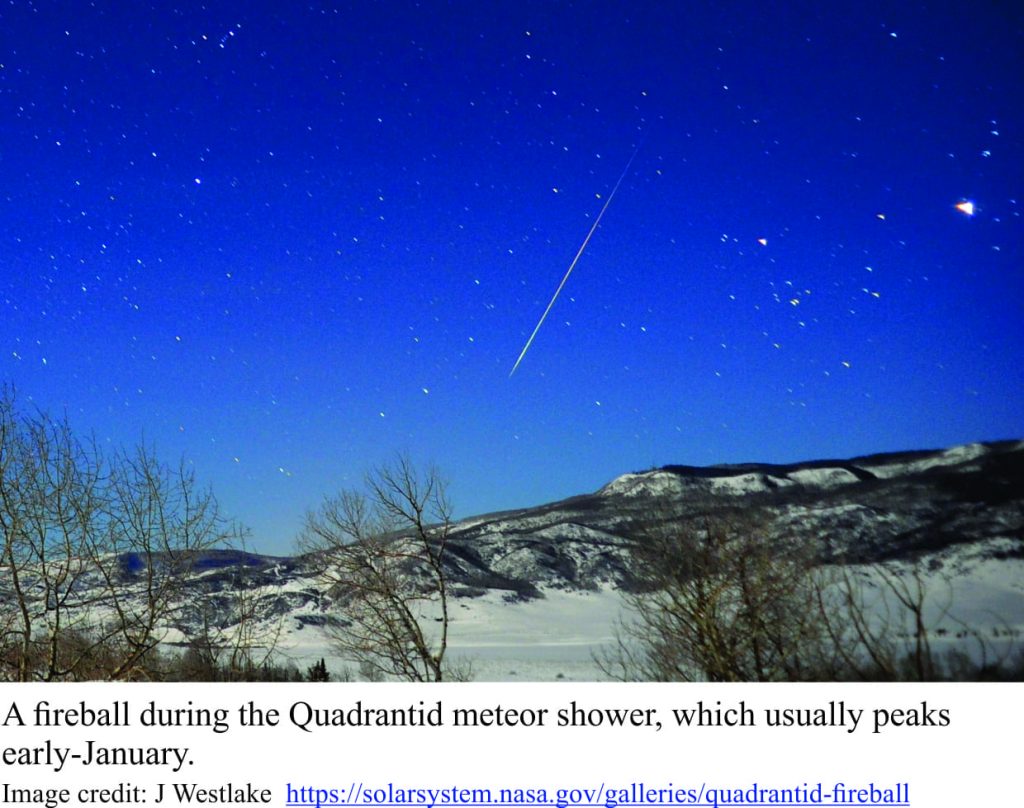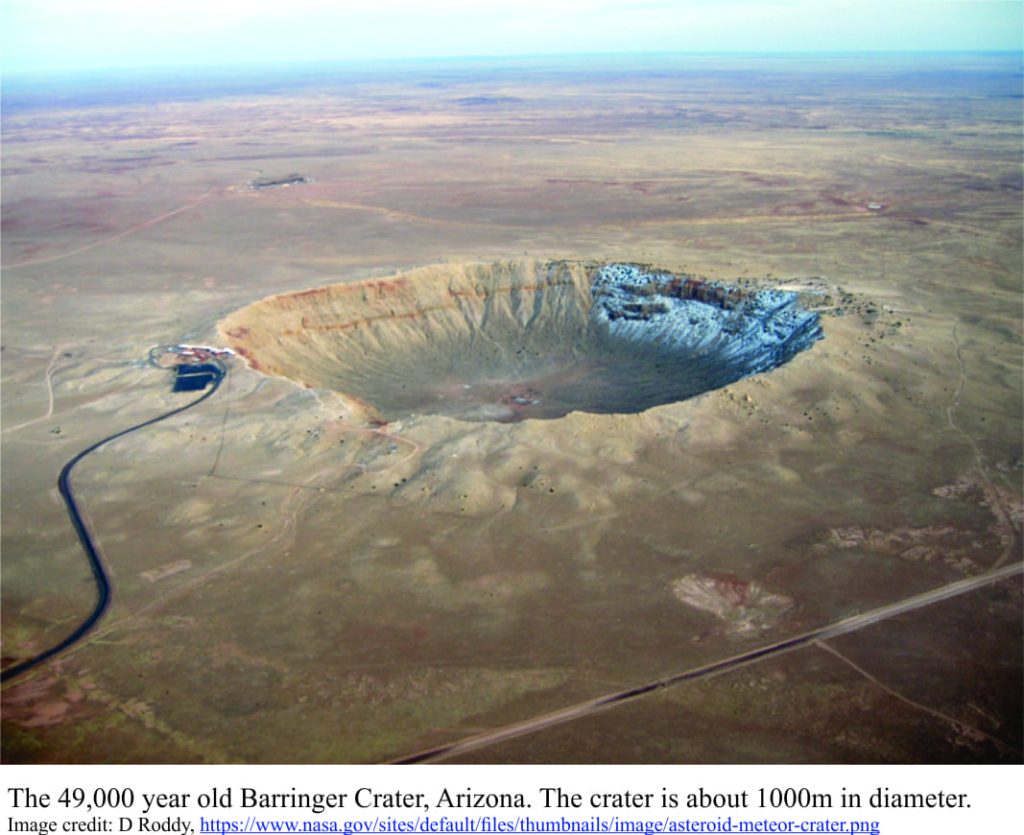In the opening scenes of Stanley Kubrick’s 2001 Space Odyssey (1968), Neanderthal-like folk are scrounging for food, squabbling with a neighbouring tribe who are intent on competing for the meagre lickings (a reactionary condition that would not bode well for future humanity). One of them picks up a large bone. There’s instant recognition, seemingly influenced by a black obelisk that appears mysteriously, that it can be used for something else. His neighbour lies in a crumpled heap. In what has become an enduring Sci-fi image, he triumphantly hurls his weapon into the air, whereupon Kubrick transforms it into an orbiting space station.
Kubrick’s imagery proposes that life on earth has a conductor, a who or an it, another intelligence, that directs the course of organic, including human, evolution. The movie script was co-written with Arthur C Clarke, no stranger to Sci-fi or to speculations about the origin of life. The idea that our origins lie in some grand experiment, directed by intelligent life somewhere out there in the universe, is a familiar theme to anyone grappling with what, for many, is the ultimate scientific question; The theory even has a name – Directed Panspermia.
Apparently, we can blame the Greek philosopher Anaxagoras (500BC) for inventing the concept of Panspermia, the ‘scattering of seeds’ from other worlds, or simply floating in space. Other luminaries, like Lord Kelvin and Stephen Hawking also think the hypothesis has merit. Directed Panspermia was popularised by Francis Crick, of DNA fame, who with co-author Leslie Orgel published a paper in 1973, outlining their speculative ideas on how DNA could be seeded from other parts of the universe.
While this is an intriguing (and perhaps disquieting) prospect, there is still no scientific evidence that we have been put here as part of some grand experiment, or for the amusement of alien intelligence. Directed panspermia also stretches the quality we call patience beyond belief – would this other intelligence wait almost 4 billion years for experimental results?
There are other strands of the panspermia hypothesis that have gained some credence of late. All involve meteorites and comets as delivery systems. Life, as bacteria or viruses, may have been delivered all those billions of years ago from distant corners of the universe, or indeed, from our own solar system. The latter is called ballistic panspermia, where a meteorite impact on some other planet, like Mars, sends ejecta into orbits that put the space jetsam on a collision course with earth.
The organisms on this chunk of rock would require the wherewithal to survive the cold of deep space (- 270oC, or -454.81oF) for what might have been billions of years, exposure to cosmic radiation, and a brutal ride on entering earth’s atmosphere. Invoking lives that formed elsewhere (and delivered to earth intact), moves the problem of life’s origin to some place other than earth, which solves the local problem, but leaves a nagging gap in our pursuit of more complete answers.
The most popular panspermia mechanism, at least from a scientific perspective, involves the delivery by bolides, not of life itself, but of some of the chemical ingredients that are critical to the development of DNA and cells. A recent paper by Ben Pearce and co-workers argues that the formation of the polymer RNA, an important ingredient in DNA, required an environment that alternated from warm and wet, to warm and dry (reminiscent of Darwin’s ‘‘warm little ponds”), into which meteorites and other space jetsam fell; the meteorites contained important chemical ingredients such as amino acids that, through a complex process of polymerization, formed RNA molecules. Their hypothesis competes with another popular theory that the inception of life on earth about 4.5 to 3.8 billion years ago, was completely homegrown, beginning in hydrothermal vents.
We now have good evidence that certain chemical compounds do exist on meteorites and comets ; the spectacular visit to comet 67P/Churyumov-Gerasimenko by the Rosetta spacecraft and the Philae Lander (2014) found 16 organic compounds, including the amino acid glycine. Other complex organic molecules, such as nucleobases (like amino acids, these are important chemical units of DNA) were discovered in the Murchison meteorite fragments, that fell on south-eastern Australia in 1969.
There is general consensus that all these extra-terrestrial compounds formed abiotically (without the intervention of organisms). Their meteoritic concentrations are very low, which leads some investigators to conclude that they did not play a significant role in life-forming processes. A counter-argument promoted by the ‘panspermists’ is that meteorite and comet bombardment of earth during its first 500-600 million years was many times greater than during younger geological periods, increasing the possibility that abiotic organic compounds may have reached the surface. However, there is an additional problem with the Panspermia delivery system.
Meteorites enter earth’s atmosphere at speeds up to 260,000 km/hour – it must be like hitting a brick wall. Air in front of the meteorite is compressed in a kind of bow-wave, and this compression heats its surface to almost 1750oC (about 3100oF). Particles on the surface of the meteorite, including any organic compounds, vaporize at these temperatures – this results in the long bright tail we commonly see from earth. The process is called ablation. If they survive this ordeal, they then face collision with the earth surface. As we know from the geological record (on earth, Moon and the other rocky planets), large asteroids can do a far bit of damage, generate a great deal of heat, excavate deep craters, and send dust and aerosols into the upper atmosphere. For example, rocks in a 28km diameter crater in Labrador contain crystals of zircon that have been transformed into the mineral zirconia; from experiment it is known that this mineral transformation occurs at temperatures greater than 2370oC. Temperatures of this magnitude occur at the instant of impact and probably cool rapidly. Not all meteorite impacts are as destructive as this. Nonetheless, a meteorite’s journey to the earth’s surface is a brutal one. It’s surprising anything survives.
One of the intriguing things about Panspermia, directed, ballistic or otherwise, is that it must have delivered materials to other planets and moons in our solar system. Mars, Saturn’s moon Enceladus, and Jupiter’s Europa come to mind. In fact, it must still be an active mechanism of organic compound or DNA dispersal throughout the universe. Future exploration of these other worlds will give us a few more clues, more hypotheses. Perhaps the Stanley Kubricks of our world will also help us get there.




















2 thoughts on “The origin of life: Panspermia, meteorites, and a bit of luck”
With respect, this is intellectually insulting: between the frequently repeated Darwinian myths of warm little ponds that are typical naturalist propaganda, panspermia only displaces the
origin of life critical events. Consequently, initial geochemical conditions and biochemical assembly, metabolism and reproduction challenges are not mitigated. There are intractable problems to purely naturalistic processes. Chemical evolution is a myth, there are no cosmic evolutionary processes capable of the complex structure, design, order and operation of biochemical systems required for even the simplest organism. The homochirality essential in nucleotide amino acids, the homopolymerization of the DNA side chains, the nucleotide coding using information design, the cell membrane formation essential for what is required for colocation. coincidence, contamination mitigation and concentrations that are absolutely precise and should be the most profound and frequently reported issues, not wild panspermia speculation.
With respect, you have completely misread my post. I am simply commenting on the ideas, not agreeing with them. I have written other posts on other aspects of science related to origins (e.g. Urey etc). Regardless of its scientific merits or lack of merits, I have no intention of ignoring the ideas proposed by quite a few scientists, who, as it turns out, are quite well known – Stephen Hawking is no fool. I do not agree with many panspermia ideas, but that does not mean that they should be intellectually ignored – that in itself would be ignorant. If you had read this post with an objective eye, you would have noticed that I also stated that panspermia simply places the problem in someone else’s backyard. The quote about Darwin’s warm ponds is a historical note, nothing more. You may not like it, but you cannot deny that it has at least historical relevance, regardless of its scientific merits. Next time you read something like this, can I suggest you also have a look at the contexts with which it has been written. Thanks you for you comment.